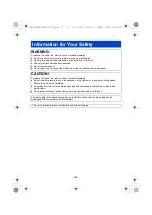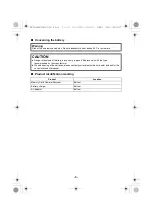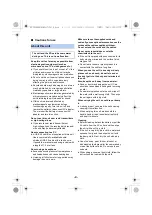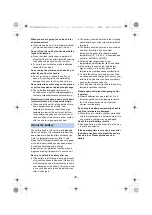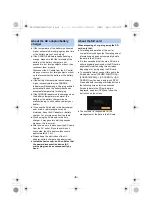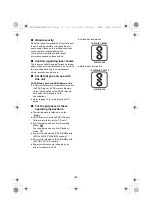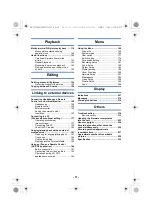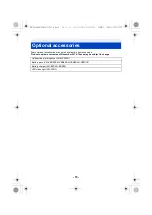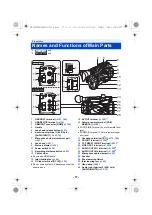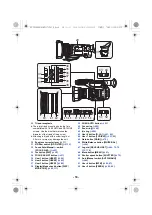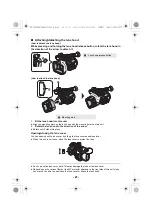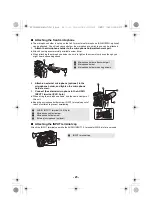
- 8 -
∫
Models described in these
operating instructions
≥
These operating instructions are designed for
use with models
and
. Pictures may be slightly
different from the original.
≥
The illustrations used in these operating
instructions show model
,
however, parts of the explanation refer to
different models.
≥
Depending on the model, some functions are
not available.
≥
Features may vary, so please read carefully.
≥
Not all models may be available depending
on the region of purchase.
≥
Model numbers are abbreviated as follows in
these operating instructions:
∫
About the recording method
for recording motion pictures
This unit can record motion pictures using three
different recording methods, including MOV,
MP4 and AVCHD*. (
,
)
* AVCHD Progressive (1080/60p, 1080/50p)
supported.
MOV and MP4:
These recording methods are suitable for
editing images. Audio is recorded in linear
PCM.
≥
Those methods are not compatible with
motion pictures recorded in AVCHD format.
≥
Those methods can record motion pictures in
formats that support 4K. 4K motion pictures
offer a resolution four times higher than that
of full high-definition motion pictures.
AVCHD:
This recording method is suitable for playback
on a high-definition compatible external monitor.
Audio is recorded in Dolby
®
Digital.
∫
Regarding system frequencies
You can change the system frequency
(59.94 Hz/50.00 Hz) for this unit by using the
menu. ([SYSTEM FREQ]:
)
≥
You cannot store AVCHD scenes recorded
with different system frequencies on the
same SD card. If you have switched the
system frequency, use another SD card.
∫
Indemnity about recorded
content
Panasonic does not accept any responsibility for
damages directly or indirectly due to any type of
problems that result in loss of recording or edited
content, and does not guarantee any content if
recording or editing does not work properly.
Likewise, the above also applies in a case where
any type of repair is made to the unit.
∫
About Condensation
(When the lens, the viewfinder
or LCD Monitor is fogged up)
Condensation occurs when there is a change in
temperature or humidity, such as when the unit
is taken from outside or a cold room to a warm
room. Please be careful, as it may cause the
lens, the viewfinder or LCD monitor to become
soiled, moldy, or damaged.
When taking the unit to a place which has a
different temperature, if the unit is accustomed
to the room temperature of the destination for
about one hour, condensation can be
prevented. (When the difference in temperature
is severe, place the unit in a plastic bag or the
like, remove air from the bag, and seal the bag.)
When condensation has occurred, remove the
battery and/or the AC adapter and leave the
unit like that for about one hour. When the unit
becomes accustomed to the surrounding
temperature, fogginess will disappear naturally.
Model number
Abbreviation used in these
operating instructions
AG-UX180
[AG-UX180]
AG-UX170
[AG-UX170]
AG-UX180
AG-UX170
AG-UX180
AG-UX180
AG-UX170
AG-UX180ED(DVQP1171ZA)_E.book 8 ページ 2016年11月28日 月曜日 午前11時32分


